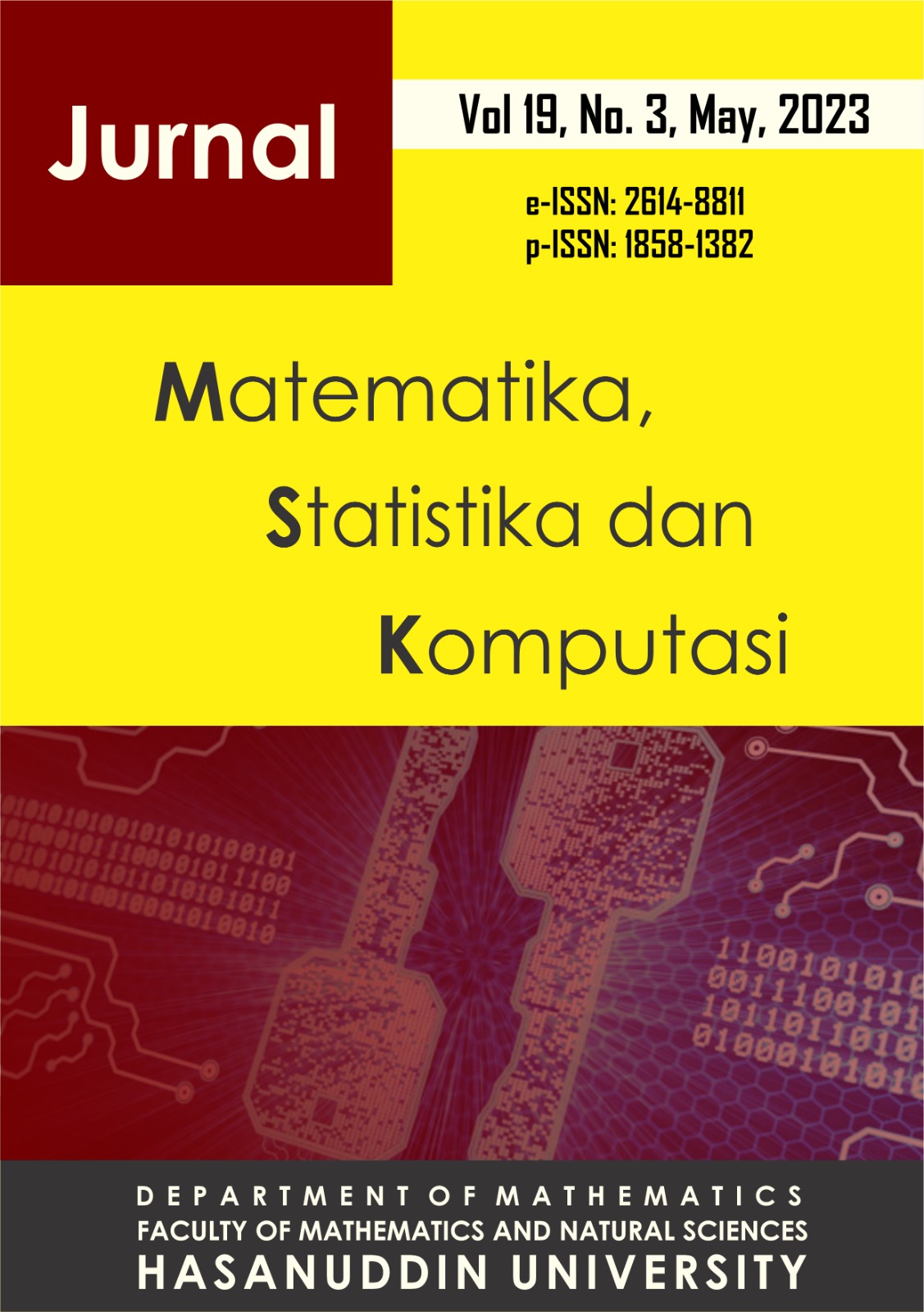Grouping Analysis of Maternal and Child Health Degree in Indonesia, Using Structural Equation Modeling Partial Least Square-Prediction Oriented Segmentation (Sem Pls-Pos)
DOI:
https://doi.org/10.20956/j.v19i3.22060Keywords:
Degree of Maternal and Child Health, SEM PLS, PLS-POSAbstract
One of Indonesia's development goals in 2020-2024 is to form quality and competitive human resources. One of the efforts to achieve this goal is to improve the quality of maternal and child health. However, the issue of Maternal and Child Health (MCH) is still a challenge for the Indonesian health system. This study aims to determine the modeling and to obtain provincial groupings based on the degree of maternal and child health in Indonesia. The method used is Structural Equation Modeling Partial Least Square-Prediction Oriented Segmentation (SEM PLS-POS). The results of the PLS SEM analysis showed that the environmental variables and health services had a significant effect on the health status of mothers and children with an R2 value of 48.8%. The grouping of provinces based on the degree of maternal and child health in Indonesia using PLS-POS produces 3 segment classes. Segment 1 consists of 11 provinces, segment 2 consists of 13 provinces and segment 3 consists of 10 provinces with a large influence between different latent variables.
References
Badan Pusat Statistik., 2020. Profil Kesehatan Ibu dan Anak 2020. Retrieved April 28, 2021, from https://www.bps.go.id/publication/2020/12/31/b9a9aa33ab5a3cc23311d0a1/profil-kesehatan-ibu-dan-anak-2020.html
Becker, 2013. Discovering Unobserve Heterogenity In Structural Equation Models to Avert Validity Threats. Management Information System Quarterly, 37.
Chin, W., 1998. The Partial Least Squares Approach for Structural Equation Modeling. Modern Method for Business research. London: Lawrence Erlbaum Associates.
Ghozali, I., 2011. Structural Equation Modeling Metode Alternatif dengan Partial Least Square (PLS). Semarang: Universitas Dipenegoro.
Ghozali, I., & Latan, 2015. Partial Least Square: Konsep, Teknik dan Aplikasi menggunakan SmartPLS 2.0 M3. Semarang: Universitas Dipenegoro.
Hair, J.F., Hult, G.T.M., Ringle, C.M., Sarstedt, M., 2021. A Primer on Partial Least Squares Structural Equation Modeling (PLS-SEM), Vol. 3
Hair, J.F., Risher, J., Sarstedt, M., Ringle, C.M., 2019. When to use and how to report the results of PLS-SEM. Eur. Bus. Rev., 31, 2–24.
Hair, J.F., Sarstedt, M., 2019. Factors versus Composites: Guidelines for Choosing the Right Structural Equation Modeling Method. Proj. Manag. J. 50, 619–624.
Hair, J.F., Sarstedt, M., Ringle, C.M., 2019. Rethinking some of the rethinking of partial least squares. Eur. J. Mark. Vol. 53, 566–584.
Afyouni, I., Alnazzawi, N., Elnager, A., Nassif, A.B., Salloum, S.A., Shahin, I., 2022. Prediction of the intention to use a smartwatch: A comparative approach using machine learning and partial least squares structural equation modeling. Informatics in Medicine Unlocked. Vol. 29. 100913
Henseler, J. R., 2009. The Use of Partial Least Squares Path Modeling in International Marketing. New Challenges to International Marketing, Advances in International Marketing, Vol. 20, 277-319.
Kementrian Kesehatan Republik Indonesia, 2021. Profil Kesehatan Indonesia 2020. Retrieved Oktober 11, 2021, from https://www.google.com/url?sa=t&source=web&rct=j, https://www.kemkes.go.id/downloads/resources/download/pusdatin/profil-kesehatan-indonesia/Profil-Kesehatan-Indonesia-Tahun 2020.pdf &ved=2ahUKEwjwvPrapa30AhWyUGwGH S8IDz8QFnoECAMQAQ&sqi=2&usg=AOvVaw2zMy1q.
Orella, A.R., Martinez, M.C., Grasso, M.S., 2021. Using Higher-Order Constructs to Estimate Health-Disease Status: The Effect of Health System Performance and Sustainability. Mathematics, Vol. 9, 1228.
Tohari, A., 2017. Pemodelan Derajat Kesehatan Menggunakan Structural Equation Modeling di Kabupaten Kediri. Jurnal Ilmiah dan Aplikasi Statistika, 1-6.
Downloads
Published
How to Cite
Issue
Section
License
Copyright (c) 2023 Author and publisher

This work is licensed under a Creative Commons Attribution 4.0 International License.

This work is licensed under a Creative Commons Attribution 4.0 International License.
Jurnal Matematika, Statistika dan Komputasi is an Open Access journal, all articles are distributed under the terms of the Creative Commons Attribution License, allowing third parties to copy and redistribute the material in any medium or format, transform, and build upon the material, provided the original work is properly cited and states its license. This license allows authors and readers to use all articles, data sets, graphics and appendices in data mining applications, search engines, web sites, blogs and other platforms by providing appropriate reference.







